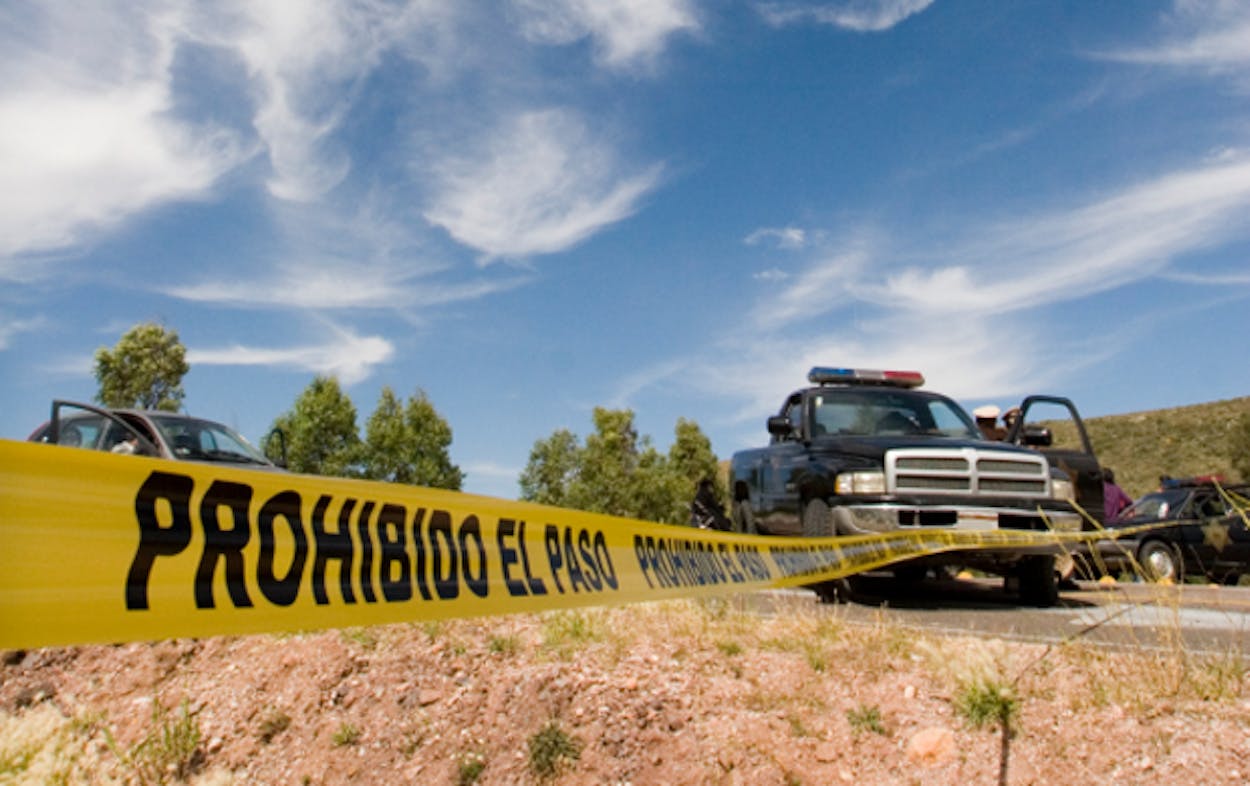For the cover story in the latest issue of the Texas Observer, Melissa del Bosque traveled to the tiny border town of Guadalupe to give an on-the-ground report of the drug war gripping the Juárez Valley, a region she dubs the “the deadliest place in Mexico.” She spent some serious time in the dangerous small town, located in Chihuahua state, where, according to one resident, “the cemeteries are all full … [and] you’ll find nothing there but ghost towns and soldiers.”
Many of Guadalupe’s buildings seem to have been reduced to burned out shells since 2008, when the Juárez Valley became ground zero in the clash between the Sinaloa and Juárez cartels. By 2010:
The escalating violence led to a mass exodus. Dozens of families fled by foot to Texas, or drove to Juarez with anything they could pack in a hurry. During this time, townspeople say, the Sinaloa cartel began to move in new people from other parts of Mexico, who they could trust to run the plaza. Soldiers and federal police circulated in the streets as they fled, residents say, but did nothing to detain the assassins who were killing people and burning homes.
She hones in on the tragic story of the Reyes Salazar family, who owned a bakery in town and were known for their activism. After six members of the family were gunned down (one at a wedding, one at a restaurant, and one on the way to the store to buy milk), only Saul Reyes survives. He has has fled to the United States, where he is seeking political asylum, but promises to never forget his slain family members.
“I believe that for all these dead there will never be justice. No one will be detained, no one jailed, no one condemned. Calderon will leave office and another president will come,” Saul said told del Bosque. “But someday I’ll go back to my hometown and erect a great monument that says that in waging war, President Calderon supported the death of all these people. And all the names will be there so that in the future we don’t live the same story twice.”
Her impeccably reported, sprawling 8,600-word story, which was funded with help from the Investigative Fund at The Nation Institute, offers a rare glimpse into a perilous, war-torn region few journalists (or people) dare to enter.







